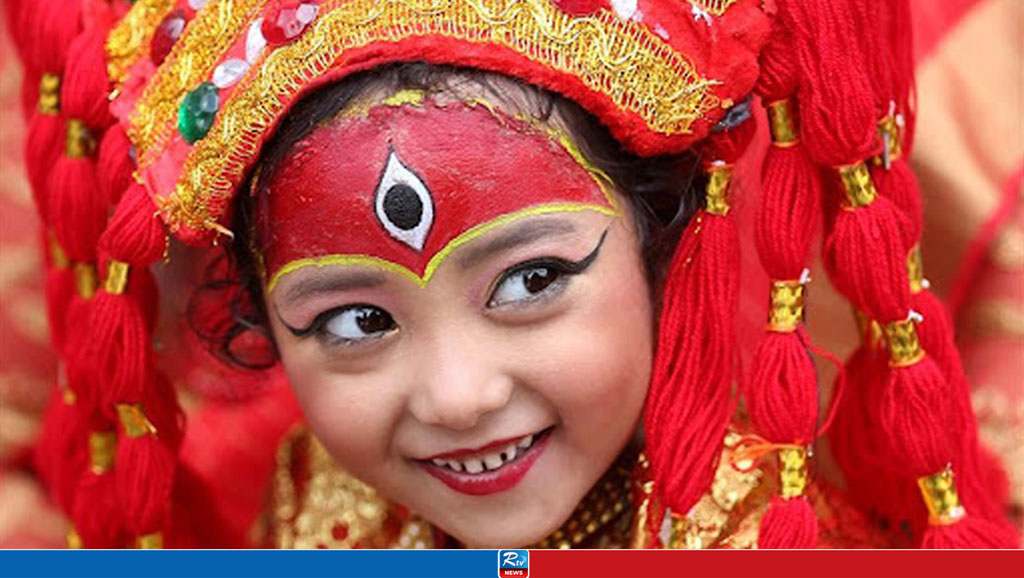Religion / Feature
Kumari Puja: Significance, Rituals, Offerings
Friday, 11 October 2024 , 10:56 AM

Kumari Puja/Kanya Puja is an important ritual observed during Navratri or Durga Puja. This year Kumari Puja is observed today (Monday, October 11).
During Kumari Puja, an unmarried teenage girl is worshipped symbolically as a goddess. Kumari puja is held at the end of Mahastami puja, but can also be held on the day of Navami puja. Kumari puja may also be held during kali puja, jagaddhatri puja, Annapurna puja and Shakti puja.
According to Hindu scriptures, Kumari puja commemorates the killing of Kolasur by the goddess Kali. According to legend, Kolasur had once occupied the heavens and the earth. The helpless deities approached Mahakali for help. Responding to their appeal, she was born again and, in the form of a maiden, killed Kolasur.
The rituals of Kumari puja and its significance have been described in detail in Yoginitantra, Kularnavatantra, Devipurana, Stotra, Kavacha, Sahasranama, Tantrasara, Prantosini and Purohitadarpana.
Significance
As per religious belief, the Kanya Puja must be done on all nine days of Navratri. However, many opt to perform Kumari Puja on either Ashtami or Navami. As for the Bengalis, Kumari puja always takes place on Ashtami of Durga puja.
Worshipping these young girls is believed to bring good fortune, wealth, and happiness into people’s lives as Mother Divine resides with them. The girls, aged between 2 and 10, represent various forms of Maa Durga, which include Kumarika, Trimurti, Kalyani, Rohini, Kali, Chandika, Shambhavi, Durga, Bhadra or Subhadra.
According to the Bhagavad Purana, the ninth day of Navaratri is believed to fulfill devotees’ wishes. Those who fast for nine days and worship young girls at the end of Navaratri are said to receive blessings. Worshipping a kumari (virgin young girl) is believed to bring good luck, two girls symbolize insight and salvation, while worshipping three girls is associated with virtue.
Rituals
- Devotees invite nine young girls (between 2 and 10 years old) to their homes. Then, they wash the girls' feet with water, wipe them, and place them on a pedestal.
- Now, a holy thread, known as Kalawa or moli, is tied around their wrists, while vermilion is applied to their foreheads.
- Following this, they are offered a variety of special dishes such as poori, chana, ghee halwa, coconut, sweets, and kheer.
- People also offer money or gifts such as new dresses, bangles, and study materials.
- Lastly, devotees ask for their blessings by touching their feet.
Offerings
To mark the occasion and conclude the nine-day-long festival, a puja is performed in which flowers, incense sticks, lamps, and other sacred objects are offered while chanting mantras in honor of Goddess Durga. Then, young girls or kanjaks are given Dakshina (money), gifts, and prasad (holy food) as a token of appreciation and attain the blessings of all the divine forms of Maa Durga. The holy food includes halwa-chana, kheer, poori, coconut, fruits, and sweets.
